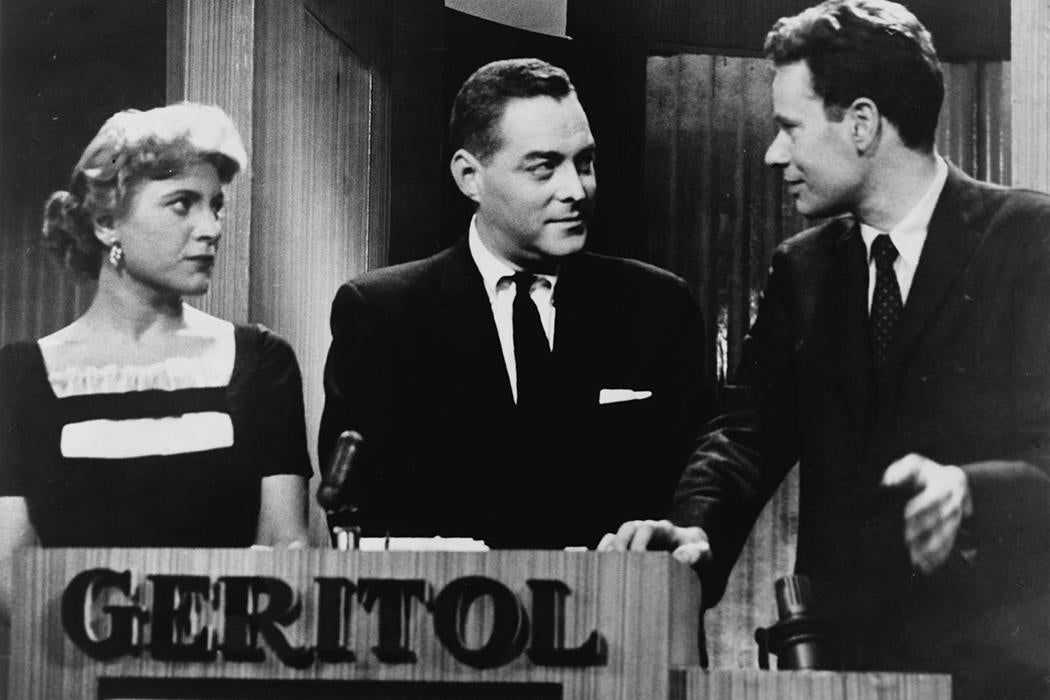In the 1950s, the world went quiz-show crazy, gathering round the television set for shows like “The $64,000 Question” and “21” that tested contestants’ intellects and viewers’ at-home knowledge. But something was rotten inside Hollywood—the shows were packed with ringers and contestants primed with answers before they went onscreen. Richard S. Tedlow investigates what happened, and how academics and American TV viewers differed on the fallout.
Charles Van Doren—later memorialized as the problematic protagonist of the movie Quiz Show—became a star because of his performance on “21,” a question-and-answer show that, in Tedlow’s words, “provided evidence that an intellectual could be handsome, that he could get rich, and that he could be a superstar.” As he racked up the questions and the prizes, the Columbia teacher became a national hero.
It all unraveled when a disgruntled competitor, Herbert Stempel, exposed the show’s secret practice of fixing answers and heightening drama by encouraging contestants to behave more like actors. A grand jury, a House subcommittee, and a national scandal followed. Soon other shows like “The $64,000 Question” went up in flames, too.
Academia quickly tried to distance itself from Van Doren. Columbia slammed his lack of ethics and pressured him to resign. Colleagues wrote high-handed essays about his moral failures and refused to participate in similar shows. American intellectuals who had not protested the shows to begin with implied that to reduce academic inquiry to “the spouting of trivia” was reprehensible.
In a way, writes Stempel, their repudiation of both Van Doren and pop portrayals of intellectuals on TV makes sense. After all, the early development of both radio and TV were “opposed every step of the way by intellectuals… who deplored what they saw as the perversion of a medium of great potential for the sake of the desire of private business to push products.” In the wake of the quiz show scandal, some intellectuals seized the opportunity to complain about how bad the beast of television had really become.
But the average American wasn’t convinced. Even after they learned of contestants’ eagerness to answer questions incorrectly in exchange for payment, writes Stempel, the American public didn’t feel it was their place to condemn. They sympathized with Van Doren, even protesting on his behalf.
Meanwhile, intellectuals insisted that the TV industry pay for its sins. In response to those calls, NBC head Robert Sarnoff promised to behave better in the future—and made a proposal that, ironically, mixed intellectualism and TV artifice even more.
As a gesture of reconciliation, Stempel writes, Sarnoff donated TV time to the presidential debates of 1960—debates that replicated the quiz show format and to which American viewers brought sensibilities shaped by the very shows that intellectuals insisted they abandon.
“…the American people, conditioned by five years of isolation booth virtuosity, expected the ‘right’ answer to be delivered pithily and with little hesitation,” writes Stempel. “They did not want to be told that some questions did not have simple answers—or any answers at all.”







